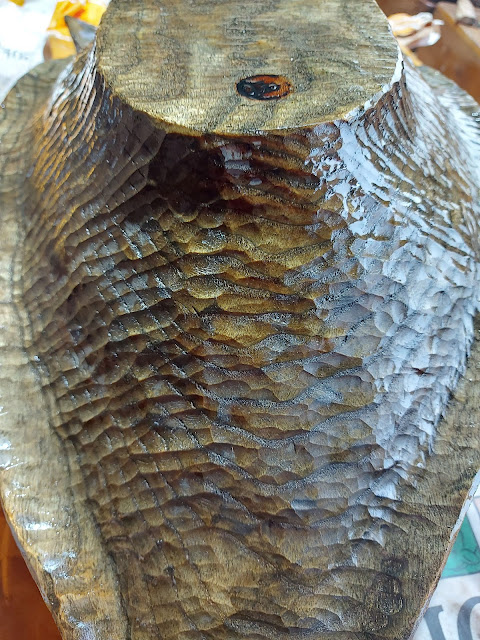It's all too easy to take photographs these days. However, it's not long ago that it wasn't so easy. In the not so distant, if I saw a carving pattern that I liked, I would sketch it out, and later maybe sit down with pencil, compass and paper.
A lot of the patterns on seventeenth century furniture were laid out in a similar way, but directly on the oak, scratching with compasses instead of pencil. Centrelines, maybe crosslines, pacing out using compasses and then arcs from all those points.
The sweep of curved gouges would then dictate a further part of the design. Then v-gouge or 'veiner', used freehand, might fill out the spaces betwixt and between.
Then 'grounding' the background, and stamps of various cunning pattern to highlight.
It is surmised by some, that apprentices, would, over the course of time, learn the patterns and become so used to their execution, that less laying out was necessary; they would produce the patterns by rote.
From my own experience, I think there must be some truth in this. Familiarity with a v-gouge certainly helps when knocking out s-scrolls and the like.
However, I must confess a weakness for measured drawing; fond memories of classes at school. It was probably the most useful thing I was taught there. I don't think technical drawing is even taught in school anymore.
Of course a rough sketch can also be useful when working out 'new' designs.













.jpg)





















